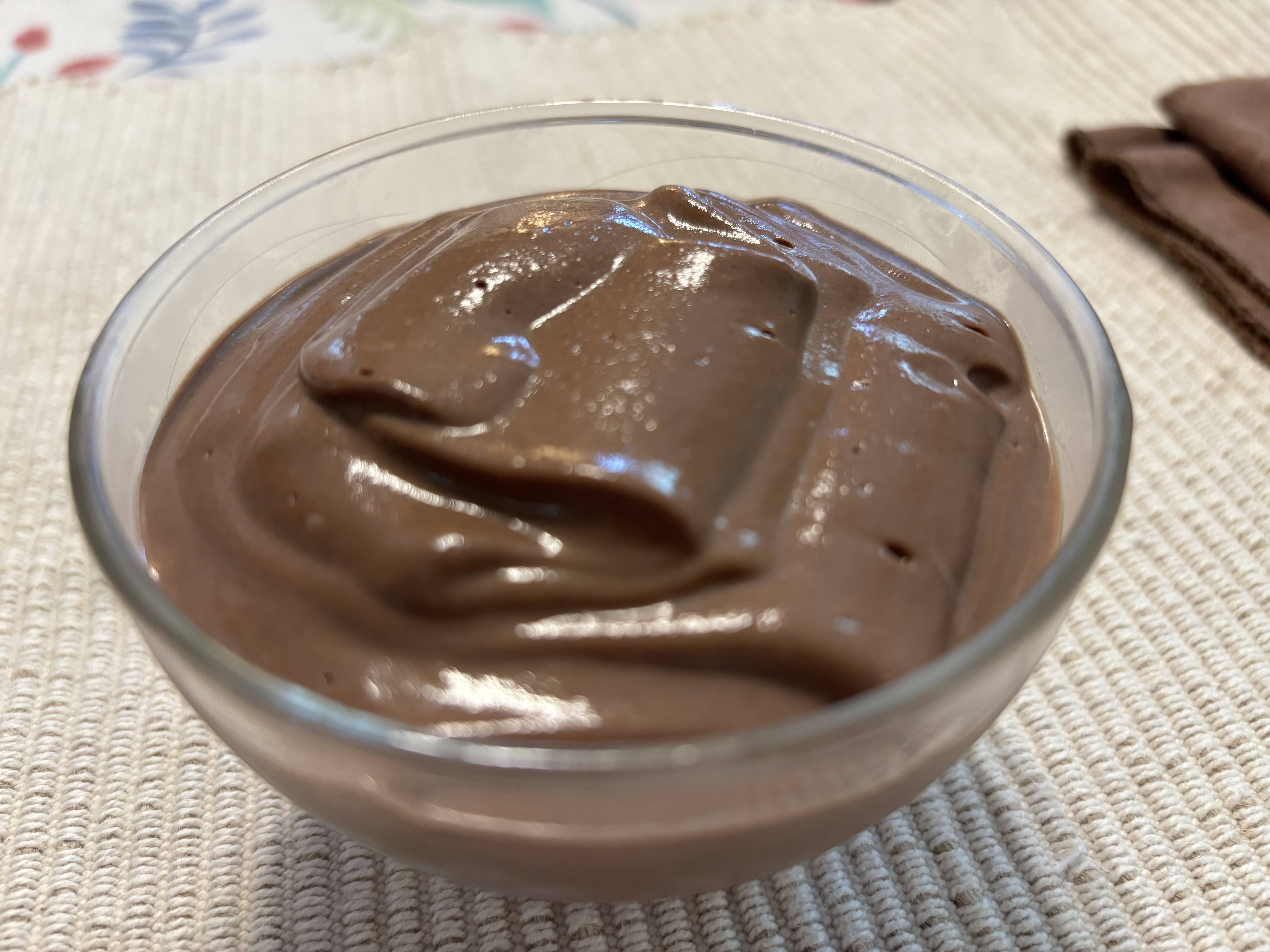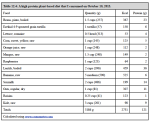Weightlifting Is A Waste Of Time
Book Review
 |
The full title of this book is: Weightlifting Is A Waste of Time – So Is Cardio And There’s a Better Way. This book is written by Dr. John Jaquish and Henry Alkire, the inventors of the OsteoStrong equipment for osteogenic bone loading and the X3 Bar equipment for myogenic muscle loading. |
In the Introduction, Jaquish and Alkire explain that the book and X3 Bar are for people experiencing any one of 4 problems, namely:
Problem 1: You have engaged in lifting weights year after year, but have had no change in your physique.
Problem 2: You have engaged in lifting weights and repeatedly or constantly suffer from sore joints or musculoskeletal injuries.
Problem 3: You do your cardio regularly, but have not achieved your desired change in body composition.
Problem 4: You have either quit your exercise program or never started due to lack of time.
I own an X3 bar and think it is a great piece of home gym equipment. However, in my review of it, I have explained that the chief marketing claim for the X3 bar ("gain muscle 3x faster") is not supported by the science cited by the company literature. Unfortunately similar errors are made in Weightlifting Is A Waste of Time.
Why Weightlifting Is A Waste of Time
The title of this book is clearly designed to grab attention. I would call it trolling. Weightlifting is a waste of time? Compared to what? For what purpose?
Jaquish invented the X3 bar after inventing the OsteoStrong machines for loading bones to produce increases in bone mass and density. In the course of this research, he discovered that we are much stronger in the impact-ready extended range of limb motion than in the weak ranges of barbell exercises, such as the bottom position of a squat, deadlift or pressing motion.
How much stronger? About 7-10 times stronger.
With this knowledge he went on to design the OsteoStrong equipment which has been proven capable of safely increasing bone mass in elderly people with just one 10-minute session of exercise weekly. 2
In addition to being stronger in the impact ready range, we are also more vulnerable to joint injuries in the weaker range of motion, such as the bottom of a squat, deadlift or press. This is due to the fact that our limbs and torso act as levers, multiplying the loads placed upon the joint structures.
After discussing the variation in the variation in a) vulnerability of joint structures to injury and b) strength curve as we move our limbs through ranges of motion, Jaquish and Alkire explain in one paragraph why they contend that weightlifting is a waste of time:
|
"Weightlifting has everything backwards. It doesn't give people there results they are looking for because it can't provide the amount of force necessary to trigger muscle growth throughout the entire range of motion. Our weight choice is limited to what our weak range can handle, so we're not effectively working our medium and strong ranges. Worse, when we choose a weight that better fits those stronger ranges, we sustain injuries because the weak range is where the most cumulative joint damage occurs. Weightlifting overloads joints, which increases chances of injury and forces us to subconsciously hesitate, and NEVER achieves anything close to full engagement of the large muscle. Weights don't change the force the put on you as you move by any magnitude, let alone a calculated one....This is why we say weightlifting is a waste of time." |
Jaquish and Alkire thus claim that for most people – not the genetic elite who make up the ranks of competitive strength sports – weightlifting (and aerobic exercise) are inefficient uses of time that produce practically speaking little or no positive results and those positive results that are produced are commonly gotten at the cost of nagging or serious joint injuries. They produce some interesting statistical evidence supporting this claim in the conclusion of this book. Only about 1 percent of the U.S. male population has an athletic body fat level (not exceeding 10%).
To support their assertion that weightlifting is a waste of time, Jaquish and Alkire cite one study that found that 26% of subjects who engaged in a typical resistance training program (3 sets of 8-12 repetitions of squats, leg presses and leg extensions 3 days/week for 16 weeks) failed to stimulate muscle protein synthesis.1 Jaquish and Alkire suggest that this is evidence that conventional training with weights is a poor stimulus for muscle growth.
However, I must note first that the majority of subjects (74%) did respond, indicating that conventional weightlifting did stimulate muscle protein synthesis for the majority of subjects. Therefore, this study provides evidence contradicting their claim that weightlifting is a waste of time (it wasn't for 74% of subjects). Further, the authors of this study commented the following about the 26% who did not stimulate protein synthesis:
|
"Whether these subjects are truly nonresponders or actually delayed responders requires further study. The possibility certainly exists that this cohort would experience hypertrophy with additional weeks of training. Studies with prolonged recovery periods between bouts (2 days/wk loading) have often resulted in more robust hypertrophy of myofibers than 3 days/wk training for both men (15, 21) and women (12, 13), particularly in older adults. It therefore stands to reason that some subjects who failed to experience hypertrophy in this study may better respond to extended recovery time between bouts and/or additional weeks of training, and both factors should be considered in future evaluations of the mechanisms driving resistance training-mediated hypertrophy among humans." |
Thus this study doesn't necessarily support the idea that weightlifting is a waste of time. Instead, it may simply show that the volume or frequency of training used in this study is not optimal for some subjects, or that some subjects need more total training bouts over a longer period of time to stimulate hypertrophy.
Nevertheless, Jaquish set out to invent equipment capable of more time-efficiently stimulating muscle growth. He had already invented the OsteoStrong machines and program that was proven capable of increasing bone mass with just one 10-minute training session weekly, so he knew that it was possible to produce dramatic improvements in load-bearing tissue with a very small weekly time investment. His goal was to find a cost-effective way to efficiently load muscles in accordance with their actual load-bearing capacity, i.e. provide a mechanism for loading the strong range of motion to a level that would actually stimulate muscle growth without imposing unsafe forces in the weak range of motion.
Engineering The X3 Bar
|
Weightlifting Is a Waste of Time recounts the process of thinking, literature research and experimentation that eventually resulted in the invention and development of the X3 Bar system for applying variable resistance to basic exercises. Chapter 2 reviews much of the research that has reported that use of variable resistance supplied by elastic bands or chains added to basic exercises (squats, deadlifts, presses) improves strength and hypertrophy outcomes. |
Chapter 3 discusses research that suggests that exercises that involve whole body stabilization – again, such as squats, deadlifts, and presses standing on your feet – along with variable resistance will produce better outcomes that machine-based exercises (e.g. leg press) that remove the dynamic stabilization requirement, because the neuromuscular effort required for whole body stabilization elicits significantly larger impulses of key hormones including testosterone and growth hormone. This last point is debatable since there is evidence suggesting that acute hormonal changes induced by resistance training may play no role in hypertrophy.3
Weightlifting Is A Waste of Time also includes:
- A discussion of the biological reasons and empirical evidence that “cardio” is bound to disappoint anyone seeking to maximize muscle and bone mass and minimize fat mass.
- A chapter on Optimizing Nutrition wherein the authors promote an exclusive meat diet except for possibly including some post-training carbohydrates and intermittent fasting.
- A chapter refuting commonly believed falsehoods of fitness. This one dispels many concepts of “bro science.”
- A chapter discussing genetic potential, presenting evidence that casts doubt on the common belief that genetic advantages or steroids adequately account for the superior muscle strength and mass of the small fraction of the population that displays such strength and mass.
- A chapter discussing training and nutrition methods that might induce muscle cell hyperplasia (increased number of muscle cells).
- Examples of X3 bar users who have gotten better results from the X3 bar program than they obtained from conventional weight training.
- An outline of the recommended X3 bar training program.
Critical Commentary
I have several critical comments on Weightlifting Is a Waste of Time .
Three times faster muscle gains
As I wrote in my X3 Bar review, don't purchase the X3 Bar expecting faster strength or muscle gains. A 2019 systematic review of studies of resistance training with elastic bands found that training with bands produces essentially equivalent gains in strength, not 3 times greater gains.34
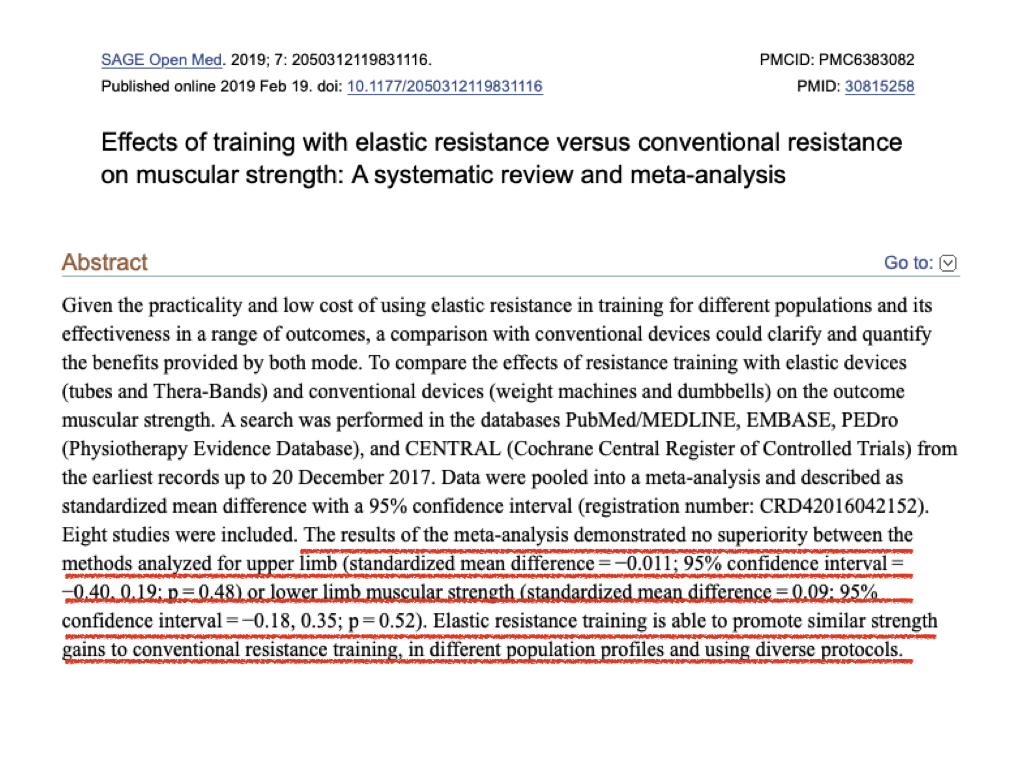
As I noted in my X3 Bar Review, the study that Jaquish and Alkire cite as evidence for "triple the gains" did not show that using elastic bands as resistance uniformly tripled gains in strength.
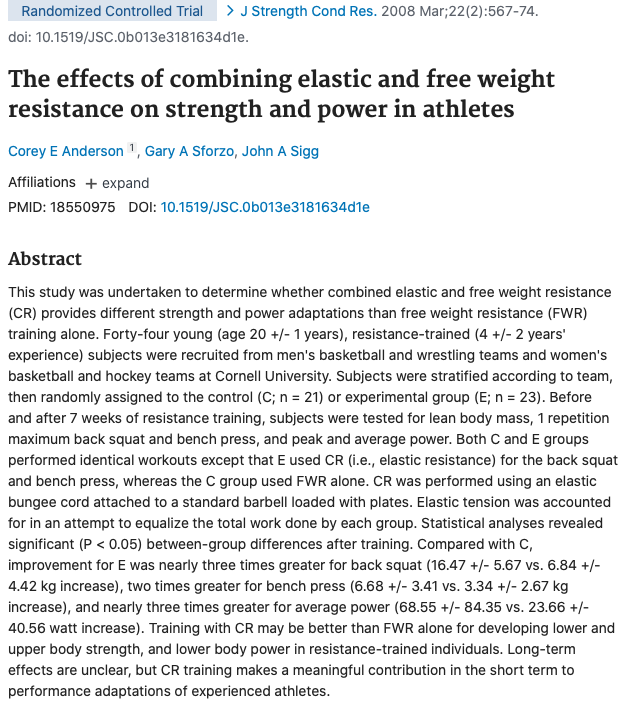
In this study, the athletes using the combined resistance had nearly 3 times greater increase in squat load, 2 times greater increase in bench press load, and nearly 3 times greater average power over the 7 week intervention. Since the strength gains were only 2 times greater for the bench press, this study does not support a claim that using elastic resistance produces a 3 times greater gain in strength for all exercises. Note however that these were strength gains, not mass gains. The X3 home page claims 3 times faster muscle growth, not strength gains.

In fact, in this study both groups gained lean mass with no statistical difference between the groups:
|
"Body composition analysis revealed a small but significant increase (P < 0.05) in LBM during training for both groups. LBM increased from 66.5 ± 15.5 to 66.8 ± 15.1 kg in the FWR group and from 65.8 ± 12.1 to 66.5 ± 12.0 kg in the CR group. Increases in LBM are common in well-planned weight training studies. However, in this study, there were no differences in LBM between the groups before or after the training program. In other words, we have no evidence that muscle mass differences accounted for the observed performance differences between the groups." (Bold added for emphasis.) |
Therefore this study provided no evidence that use of the X3 bar will enable you to grow muscle 3 times faster than with weights.
Next, in this study only 20% of the total load was provided by elastic resistance. While it is correct to attribute the greater rate of gain to the variable resistance provided by the bands (the only difference in equipment between the conditions), this study does not provide evidence that training with more than 90% of resistance from bands via the X3 system will have the same effect. It is possible that the combination resistance (free weight + bands) with at least 50% of the resistance coming from free weights produces better results than either free weights alone or the X3 system alone. No one has done any properly controlled trial to determine the answer to this question.
It bears noting that not one of the studies of variable resistance training cited in Weightlifting Is A Waste of Time produced evidence of three times faster rate of gain in muscle tissue than conventional training. NOT ONE! It is obvious, since the authors do not claim that any of the studies they cite produced such evidence. Moreover, not all of the studies cited showed 3 times greater strength gains either, also obvious because the authors do not claim such.
I checked their citations; here's a quick review of them:
- Ghigiarelli JJ, Nagle EF, Gross FL, Robertson RJ, Irrgang JJ, Myslinski T. The effects of a 7-week heavy elastic band and weight chain program on upper-body strength and upper-body power in a sample of division 1-AA football players. J Strength Cond Res. 2009 May;23(3):756-64. doi: 10.1519/JSC.0b013e3181a2b8a2. PMID: 19387404. "Results indicated a significant time (p < 0.05) but no group effect for both predicted 1RM (kg) and 5RM peak power tests (watts). Although not significant, results did show greater nonsignificant improvements in the EB (848-883 W) and WC groups (856-878 W) vs. control (918-928 W) when the 2 highest and greatest values were selected regarding peak power." "No group effect" means the strength gains were similar between elastic band (EB), weight chain (WC), and control (traditional barbell) programs. Also, the peak power improvements were not significant between treatment arms. Translation: EB training produced overall strength gains similar to and peak power gains "non-significantly better" than conventional training. That's a far cry from 3 times greater gains.
- Joy JM, Lowery RP, Oliveira de Souza E, Wilson JM. Elastic Bands as a Component of Periodized Resistance Training. J Strength Cond Res. 2016 Aug;30(8):2100-6. doi: 10.1519/JSC.0b013e3182986bef. PMID: 23669815. (This one was cited incorrectly in Weightlifting Is A Waste of Time.) "Although there were no significant group ×-time interactions, the VRT group's percent changes and effect sizes indicate a larger treatment effect in the squat and bench press 1RM values and the vertical jump performed on the force plate and vertec. These results suggest that when using variable resistance as a component of a periodized training program, power and strength can be enhanced." Strength gains were not 3 times greater; no report of greater mass gains.
- Rivière M, Louit L, Strokosch A, Seitz LB. Variable Resistance Training Promotes Greater Strength and Power Adaptations Than Traditional Resistance Training in Elite Youth Rugby League Players. J Strength Cond Res. 2017 Apr;31(4):947-955. doi: 10.1519/JSC.0000000000001574. PMID: 27465633. "Bench press 1RM increased by 5.21 ± 3.97% in VRT (before = 95.6 ± 9.6 kg; after = 100.6 ± 10.9 kg) and by 4.66 ± 4.20 in TRAD (pre = 105.6 ± 23.3 kg; before = 110.6 ± 24.7 kg) " So the athletes using variable resistance increased their bench press by 5.21%, and the traditional training athletes by 4.66%. The difference is ~0.6%, quite marginal. In absolute numbers the VRT group increased by 5 kg, the TRAD group by 5 kg (110.6 kg after minus 105.6 kg before. This study provided no data on hypertrophy at all. The results from VRT were not 3 times greater any way you cut it.
- McCurdy K, Langford G, Ernest J, Jenkerson D, Doscher M. Comparison of chain- and plate-loaded bench press training on strength, joint pain, and muscle soreness in Division II baseball players. J Strength Cond Res. 2009 Jan;23(1):187-95. doi: 10.1519/JSC.0b013e31818892b5. PMID: 19050650. "Statistically significant increases were found in strength scores after training for the CBP test (p < 0.001) and the PBP test (p < 0.001). Both groups were able to improve strength on the CBP and PBP, but no significant differences were found in strength gains between the groups on the CBP and PBP tests. Although levels of pain and soreness were not significantly different, a threefold difference was found for perceived levels of shoulder pain (mean totals of 2.15 vs. 6.14), whereas reported soreness was similar (9.38 vs. 10.57) for the CBP and PBP group, respectively. The data indicate that training with chain- and plate-loaded resistance produce similar short-term strength improvement on the chain- and plate-loaded bench press. Baseball players may benefit from CBP training with improved free-weight strength while minimizing shoulder stress." No difference in strength gains between the groups. No changes in lean mass reported. Chain resistance group had less shoulder pain. Variable resistance did not produce 3 times greater strength gains; nor greater mass gains; but did reduce shoulder stress.
- Godwin MS, Fernandes JFT, Twist C. Effects of Variable Resistance Using Chains on Bench Throw Performance in Trained Rugby Players. J Strength Cond Res. 2018 Apr;32(4):950-954. doi: 10.1519/JSC.0000000000002421. PMID: 29309388. This was not a training study, but a study of acute effects of variable resistance. No strength or mass gains reported.
- Andersen V, Fimland MS, Mo DA, Iversen VM, Larsen TM, Solheim F, Saeterbakken AH. Electromyographic comparison of the barbell deadlift using constant versus variable resistance in healthy, trained men. PLoS One. 2019 Jan 22;14(1):e0211021. doi: 10.1371/journal.pone.0211021. PMID: 30668589; PMCID: PMC6342300. "In summary, a high contribution from variable, external resistance seems to activate the back extensors more than a low contribution." Using elastic bands for a high proportion of resistance (~41%) increased muscle activation, but no strength or mass gains reported.
- Andersen V, Steiro Fimland M, Knutson Kolnes M, Jensen S, Laume M, Hole Saeterbakken A. Electromyographic Comparison of Squats Using Constant or Variable Resistance. J Strength Cond Res. 2016 Dec;30(12):3456-3463. doi: 10.1519/JSC.0000000000001451. PMID: 27100320. " In conclusion, performing the squat using free weights in combination with elastic bands seems to be preferable compared with free weights alone and more so with a high contribution from variable resistance to the total load." Using elastic bands for a high proportion of resistance (~73%) increased muscle activation, but no strength or mass gains reported.
- Shaw MP, Andersen V, Sæterbakken AH, Paulsen G, Samnøy LE, Solstad TEJ. Contemporary Training Practices of Norwegian Powerlifters. J Strength Cond Res. 2020 Mar 18. doi: 10.1519/JSC.0000000000003584. Epub ahead of print. PMID: 32195767. "The majority of Norwegian (76.9%) powerlifters train with variable resistance, with those competing internationally more likely to use elastic bands.... Norwegian powerlifters' training differs from practices previously identified in the literature, with a higher prevalence of elastic resistance, particularly for those competing internationally, and a decreased use of weightlifting exercises at all levels." No evidence for superior strength or muscle mass gains from training with elastic bands.
To summarize, only one of the studies cited in Weightlifting Is A Waste Of Time reported lean mass gains, and in that study, lean mass gains were similar between the group that used elastic resistance and the group that did not. As for strength gains, only one study reported 2-3 times greater strength or power gains with the use of variable resistance; while the others cited reported only marginally better gains or no better gains with variable resistance. This is simply insufficient evidence for claiming 3 times greater gains with variable resistance training.
At best this body of research indicates that variable resistance training using elastic bands will produce strength and mass gains similar to conventional training with less joint stress. That is great news. Bands are more economical and compact and probably safer to use than metal weights and machines. If the X3 training program produces similar results to conventional training with less time investment and a lower risk of injury, it is superior and preferable.
Joint injuries - weights vs acceleration
While it is true that many people sustain joint injuries when performing barbell exercises, and that this is in part due to the loads placed upon the joints by the multiplication of the external load by the bones acting as levers, there is also another and I think more important factor: acceleration. That is, the force acting upon the joints is largely determined by the rate of change in velocity of the load, according to the equation: Force = mass x acceleration.
Briefly, when people perform the eccentric phase of exercises such that the load is allowed to drop rapidly into the bottom position, or they start the concentric phase with a sudden acceleration or jerk on the load, the rapid acceleration dramatically increases the impact force imposed upon the joint structures involved in either stopping or starting the motion of the load. In contrast, performing exercises with a slow eccentric and without jerking eliminates the sudden impact forces, thereby protecting the joints from damage by such forces. Thus, proper exercise performance can remove the danger of damaging the joints with barbell or bodyweight exercises.
Weak range - "muscle doesn't fire" vs mechanical disadvantage
In Weightlifting Is A Waste Of Time Jaquish and Alkire claim (page 28) that we are weaker in the weak ranges of motion because "Research demonstrates muscle does not effectively fire in the weak range." To support this claim they cite just one study of the 'sticking period' in the bench press as evidence that "the nervous system is actually unable to recruit as much muscle tissue at the 'sticking point' where the bar is closest to the chest."31
However, the authors of that 2010 study did not conclusively prove that "muscle does not effectively fire in the weak range." Instead, in that study they only suggested that "diminishing potentiation of the contractile elements during the upward movement together with the limited activity of the pectoral and deltoid muscles during this period" was a "possible" – not proven – explanation for the weak range.
Had Jacquish and Alkire done a more thorough literature review, they would have discovered that in 2012 the same team of researchers performed another study designed to test that "diminished potentiation" hypothesis, from which they concluded "that diminishing effect potentiation could not explain the existence of the sticking region." They found no diminished muscle activation in the weak range, and concluded that their results supported the hypothesis that the lower force output in the weak range was simply due to the weak range consisting of mechanically poor positions (i.e. poor leverage), not diminished muscle recruitment.32
Load and Time Under Load
At least twice in Weightlifting Is a Waste of Time (pages 39 and 55) Jaquish and Alkire state that the optimum time under load is 30-60 seconds, and then they recommend performing 15-40 repetitions of each exercise at a 2/2 cadence, i.e. 4 seconds per repetition (pages 218, 230). They also state that the load itself must be heavy (pages 27-28) and cite a study by Schoenfeld et al as providing evidence that heavy loads are superior to lighter loads.18
Simple math indicates that at that cadence, 15 repetitions will be 60 seconds under load and 40 repetitions will be 160 seconds – nearly 3 minutes – under load.
Clearly, if the goal is 30-60 seconds of time under load, and you are performing 4 second repetitions, the correct repetition range should be 8-15. That repetition range corresponds to a moderately heavy load of 60-80% 1RM.4 A time under load of 160 seconds (40 repetitions at 4 seconds per repetition) roughly corresponds to a light 20-40% 1RM load.
Heavy Load: >80% 1RM ~5-25secs TUL to MF
Moderately Heavy Load: 60-80% 1RM ~30-70secs TUL to MF
Moderately Light Load: 40-60% 1RM ~70secs-120secs TUL to MF
Light Load: 20-40% 1RM ~120-260secs TUL to MF
Indeed, as shown below, in the study by Schoenfeld et al18 that Jaquish and Alkire cite (page 27 of Weightlifting Is a Waste of Time) as providing the evidence that the load must be "heavy" to elicit optimal strength and mass adaptations, high-load or "heavy" load training was defined as at least 65% 1RM.
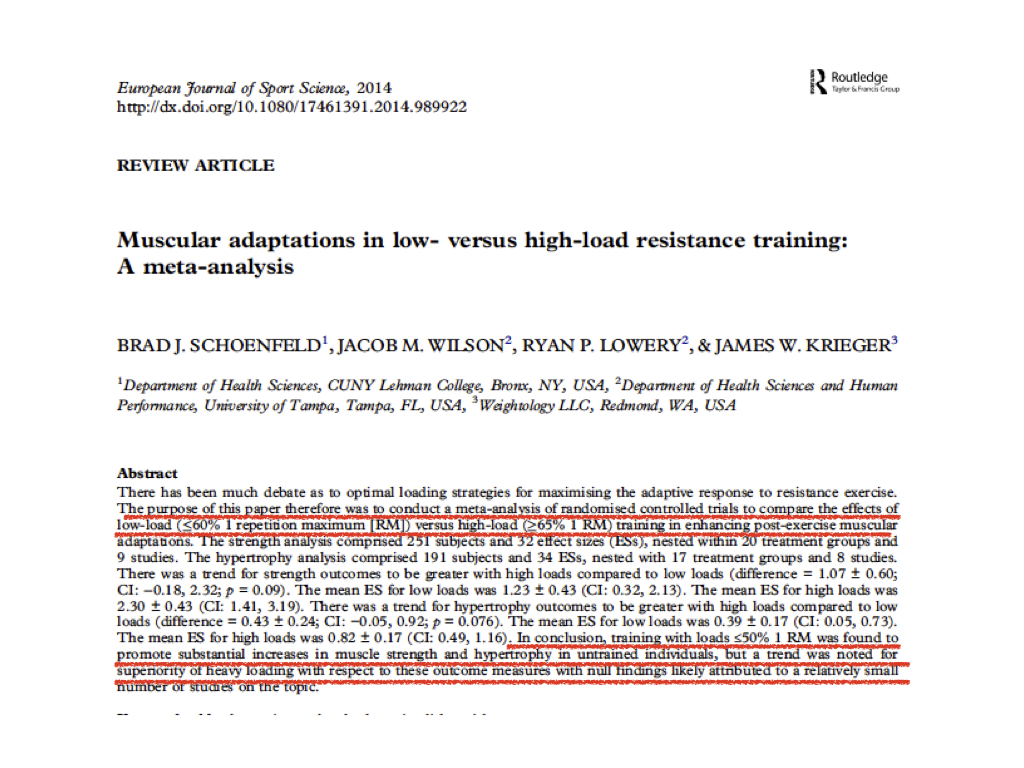
It is well established that a 65% 1RM load will permit only about 15 repetitions at a typical cadence (Table 1). If you can do more than 15 repetitions you are using a load that is less than 65% 1RM. Therefore, if you follow the standard X3 program outlined in Weightlifting Is a Waste of Time you will be using what exercise scientists define as light loads (15-40 RM), not heavy loads (8-15 RM).
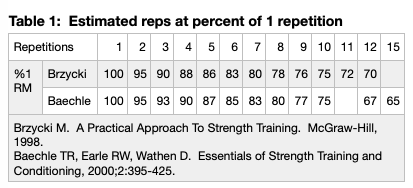
A 2018 research report suggests that such very light loads may stimulate less hypertrophy than loads greater than 40% 1RM.5 A 2014 study found that a load of 30% 1RM did not maximally activate the full motor unit pool of the muscles involved in the leg press in spite of training to muscular failure. 6
A 2005 study found that although subjects training with a low 50-55% 1RM load permitting 14-16 maximal repetitions per set did produce strength gains of 42-66% over 24 weeks, subjects training with a high 80-85% 1RM load permitting only 6-8 repetitions per set produced greater gains of strength (63-91%), anaerobic power and mobility. In addition, after 4-8 months of detraining, all the training gains produced by the low load training disappeared, whereas subjects who used the high load training retained their strength and mobility gains throughout the detraining period.7
Evidently, training loads greater than 70% of 1RM produce superior strength development and hypertrophy in comparison to lesser training loads, particularly in older adults and highly trained individuals.8, 9, There exists a dose-response relation between load and hypertrophy and a load of about 80% of 1RM produces optimal hypertrophy of both type I and type II fibers as well as strength gains.10
A 2019 study found that elders performing resistance training with elastic band loads that allowed 12-18 repetitions produced significantly smaller muscular strength and mass gains than training with loads allowing only 6-12 repetitions; and more, the heavier loading protocol increased tendon stiffness by 6% whereas the lighter loading protocol allowed age-related decrease in tendon stiffness to continue at a rate comparable to the control group that did no resistance training at all.11 The authors suggested that heavy load resistance training is advisable for older adults to maintain tendon function with aging.
High loading in the range of 70-90% of 1RM, permitting only 8-12 repetitions per set, may also be required to achieve increases in bone mineral density12 unless you use a time-consuming power training protocol with a high rest to work ratio (8 sets of 3 reps taking 1 hour to complete for lower limb training session alone) that only has a marginally significant benefit.13
From a physiological perspective, all motor units of a muscle are activated only during the last 3-5 challenging repetitions of any set carried to concentric failure.14 Therefore, when you use loads low enough to allow more than 15 repetitions, you end up doing far more repetitions during which not all motor units are activated. A set of 15 to fatigue involves doing 10 repetitions before the last 5 repetitions with all motor units activated; that's twice as many lower-recruitment as full-recruitment repetitions. A set of 40 involves doing 35 repetitions before reaching full motor unit recruitment during the last 5 repetitions.
If you are doing only one set to fatigue, its probably wise to perform 3 to 15 repetitions (in 10-20 repetition sets) as a warm-up built into the structure of the set, eliminating the need for multiple time consuming warm-up sets, and avoiding loads exceeding 80% 1RM that may increase injury risk, but I am unaware of any evidence of need for 20 or more warm up repetitions before performance of the last ~5 repetitions that recruit all motor units .
Another consideration is that such low loads and high set durations result in greater and unnecessary discomfort that stands in the way of reaching true muscular failure. During such a set you are using the glycolytic energy systems that produce lactic acid as a by-product. It is similar to running one-quarter mile at top speed. Its painful!
The longer it takes to get to muscular failure, the more lactate accumulates in the working muscles, and the greater the discomfort a trainee will experience. This discomfort discourages reaching failure; a trainee is likely to terminate the set due to discomfort rather than due to inability to produce enough force.15, 16, 17
In my own training, I find it extremely uncomfortable to do 15-20 repetitions in the full front squat or deadlift, with a time under load of 1.5-2.0 minutes, and won't even try to do sets with higher repetitions, because I know they would be even more uncomfortable.
Lastly, Haun and colleagues compared the molecular, neuromuscular, and recovery responses to light (30% 1RM) and heavy (80% 1RM) resistance training to concentric failure in young men. They found that training with a light load produced a lower EMG amplitude, involved far more volume load and total repetitions, took more time, and impaired the recovery response (required more recovery time).18 Other research has shown greater increases in cortisol levels in response to long duration, low 55% 1RM load resistance training in comparison to training with 70-85% 1RM loads, signifying that the low load training is more systemically stressful than the high load training.19
In Weightlifting Is a Waste of Time Jaquish and Alkire also suggest that one should do a minimum of 15 repetitions for safety, implying that using lighter loads (15-40 repetitions) is safer than using moderately heavy loads that permit only 8-15 repetitions. However, we now have evidence that lighter loads may NOT be safer than moderately heavy loads.
A 2018 study found that when hypertensive postmenopausal women did resistance training with 15 repetition sets lasting ~75 seconds they had increased markers of cardiovascular stress including deleterious effect on heart rate variability and increases in sympathetic nervous system activity compared to training with 6 repetition sets lasting about 30 seconds each. The subjects doing the low load, 15 RM protocol performed 87% more work than those doing the high load, 6 RM protocol. Those performing short duration sets showed no significant impact on the autonomic response compared to no training at all. The low load condition was significantly more hazardous with respect to cardiovascular function than the high load condition.20
Since hypertrophy outcomes are equal and strength outcomes are probably superior33 with heavier loading that produces less discomfort and stress response, and require less recovery time, I don't see value in extending sets beyond 15-20 repetitions., The cost-benefit ratio favors the performance of shorter sets of 8-15 or at most 20 repetitions with greater loading over the performance of longer sets of 15-40 repetitions with lower loads.
Optimizing Nutrition
The nutrition information found in Weightlifting Is A Waste Of Time contains a number of claims in conflict with cited sources or accumulated evidence.
First, on page 120 of Weightlifting Is a Waste of Time the authors claim that "fat is the most satiating nutrient." They provide no reference to support this claim. In contrast, Holt, Brand-Miller and colleagues conducted an investigation to determine satiety index of foods and reported that protein, fiber and water contents of foods correlated positively whereas fat content negatively with satiety.21 Rolls reviewed research investigating the satiating effects of fat vs carbohydrate and found "when given in equal volumes, carbohydrate (sugar) and fat have similar effects on hunger, satiety, and subsequent food intake when infused intragastrically or ingested in foods by normal-weight, unrestrained young men."22 Cotton and colleagues found that fat is significantly less satiating than carbohydrate when given under controlled conditions in equicaloric amounts.23
In Weightlifting Is a Waste of Time Jaquish and Alkire attempt to support their claim that fat is the most satiating nutrient by writing "Without enough fat it is much harder, and will require many more calories, to feel full. That's why if you eat only lean chicken breasts, an hour later you are hungry." Thus, they exclude carbohydrate from consideration completely, and fail to compare equicaloric portions of protein and fat. If you compare a kilo of skinless chicken breast to a kilo of chuck steak, you find that the former provides 1730 kcal and the latter 3300 kcal. The latter will be more satiating than the former because it contains more energy, not because fat is more satiating than protein. You would have to eat 2 kilos of skinless chicken breast to match calories. I doubt the authors of Weightlifting Is a Waste of Time conducted such a calorie-matched experiment.
On page 152 of Weightlifting Is a Waste of Time the authors claim that a paper by Calton24 "shows that if you're eating whole foods and your goal is to get to the recommended daily intake of vitamins, you'd need to consume 27,000 calories a day." Their comment misrepresents Calton's paper. Calton investigated the nutritional adequacy of four popular diet plans – South Beach, Atkins, DASH, and Best Life – and found that these specific plans produced micronutrient deficiencies because of their restrictions. These plans supplied only 1197, 1786, 2217, and 1793 calories, respectively...a mean of 1748...in other words all were calorically restricted. In addition, these diets restrict specific foods in every case, and consequently each one is deficient in the nutrients that are best supplied by the foods that they eliminate. For example, the DASH diet restricts egg yolk intake, and consequently Calton found that it provided less than half of the daily recommended intake of choline, the best source of which is egg yolks. Calton found that the South Beach and Atkins diets were the most nutrient deficient, a fact that should be a warning signal to those promoting a strictly "carnivore" diet of meat only. Next, Calton found that if you accept the dietary restrictions of each of these popular diets, you will need to eat an enormous amount of energy in order to reach recommended micronutrient intakes. Of interest the Atkins diet – the one closest to the carnivore diet recommended in Weightlifting Is a Waste of Time required the highest caloric intake to achieve recommended intakes for all micronutrients: 37,500 calories! Calton thus documented that if you use the South Beach, Atkins, DASH or Best Life plans to formulate your diet with a negative energy balance for fat loss, you may incur micronutrient deficiencies.
Thus, contrary to the claim made in Weightlifting Is a Waste of Time, Calton did not show that one must consume 27,000 calories daily to meet recommended micronutrient intakes, regardless of diet composition. He just showed that 4 popular diet plans are not micronutrient sufficient because of food restrictions.
I have shown that a well-planned lactovegetarian whole foods plant based diet can meet all recommended intakes for micronutrients, whereas a strictly carnivorous diet with the same caloric content falls short of multiple micronutrients.
Unfortunately I have learned through hard experience that how you feel and perform on a day to day basis is not necessarily an accurate measure of the micronutrient sufficiency of your diet. Nature favors short-term survival at the expense of long-term health; therefore the body probably allocates scarce micronutrients by triage, which in turn would accelerate cancer, aging and neural decay while leaving critical metabolic functions, such as ATP production, intact.30
Consequently you can feel and function fine while some part of your body is degenerating more rapidly than it would on a nutrient-dense diet. Then, seemingly suddenly, you fall and break a bone and find that you have suffered from calcium deficiency for years; or you tear a tendon due to long-term manganese deficiency; or you have cancer linked to thiamin, vitamin A, selenium or other micronutrient deficiency.
This parallels the individuals who "were never sick a day in their lives" then die suddenly of coronary artery occlusion – heart attack – or suffer a stroke – brain attack. Many illnesses are threshold phenomena...you don't "feel" anything until a critical threshold is surpassed and suddenly the foundation collapses.
Weightlifting Is a Waste of Time suggests that restricting carbohydrate is the optimum strategy for managing body fat levels. I used to promote carbohydrate restriction myself, but now I know that losing body fat is simply a matter of creating a negative energy and fat balance and the claim that restricting carbohydrate is more effective ("optimal") than restricting fat lacks supporting evidence.
High quality evidence produced under controlled conditions suggests the advantage may go to restricting fat. A meta-analysis of 32 controlled feeding studies with isocaloric substitution of carbohydrate for fat found that both energy expenditure and fat loss were greater with low fat diets than with low carbohydrate diets.25
Also, under uncontrolled conditions, research has found no advantage to carbohydrate restriction. A meta-analysis of randomized trials in free living humans found no difference in long term effect or adherence between low-carbohydrate and low-fat diets (in general results were poor either way).26
Weightlifting Is a Waste of Time also asserts that intermittent fasting is superior to continuous energy restriction for fat loss. Again, I have also promoted intermittent fasting for health benefits and weight loss, even wrote a book (Primal Fasting) to do so, but in respect to weight loss a review of controlled trials found that "intermittent and continuous energy restriction achieved a comparable effect in promoting weight-loss and metabolic improvements."27
In contrast to the nutrition recommendations given in Weightlifting Is a Waste of Time, Iraki and colleagues provide evidence-based recommendations for increasing muscle mass and reducing body fat.28
- Consume 1.6-2.2 g/kg/d protein distributed over 3-6 meals daily to optimize protein utilization.
- Keep fat intake moderate, in the range of 0.5-1.5 g/kg/d (that's 20-35% of energy).
- Consume whole foods carbohydrates liberally, in the range of 3-5 g/kg/d to support the energy demands from resistance exercise.
Notice that Iraki and colleagues state that carbohydrate is to provide the largest fraction of the diet, not the smallest.
Based on the evidence reviewed by Iraki and colleagues28 a low carbohydrate diet is very likely suboptimal for building muscle and strength due to depletion of muscle glycogen. Somewhat ironically, on pages 206-208 of Weightlifting Is a Waste of Time recommend consuming a bolus of carbohydrates – 0.5–0.7 grams per pound (1.1–1.5 grams/kg) bodyweight after X3 Bar training sessions on the basis of research indicating that filling muscle glycogen stimulates muscle protein synthesis and reduces protein degradation.
When I tried severe carbohydrate restriction it did not serve me well long term because it resulted in deficient intake of potassium and other minerals, leading to water balance and muscle and tendon issues. A large body of evidence indicates avoiding whole food carbohydrate sources is probably also not optimal for long term health, so I no longer promote severe carbohydrate restriction.
Further, the preponderance of evidence clearly indicates that a whole foods plant based diet provides the best protection against diet-related diseases such as obesity, diabetes, cardiovascular disease, cancers, and dementia. When protein content and resistance training programs are similar, plant based diets support muscle gain similar to animal based diets. Hence, I suggest that people who want to build muscle follow the evidence-based macronutrient guidelines outlined by Iraki and colleagues above, while minimizing or avoiding animal products.
What about fat loss? In an peer-reviewed scientific article, Helms and colleagues state the current state of the science: To reduce body fat while building or at least retaining muscle, individuals should consume 2.3-3.1 g/kg/d protein, 15-30% of calories from fat, and the remainder of calories from carbohydrate, while eating 3-6 meals daily, and restricting energy (fat + carbohydrate) intake by no more than 500 calories per day to achieve gradual fat loss of no more than 1 pound per week.29
In other words, these authors (some themselves strength athletes) recommend a high-protein, low fat, moderate to high carbohydrate diet including both animal and plant products. Just as there is no getting around "heavy" loads for muscle gain, there is no getting around negative fat balance for fat loss (and negative total energy balance for weight loss, which is not the same as fat loss).
Regarding body fat accumulation, meat and dairy products are contributors due to their high energy density (calories per gram) in comparison to plant foods. The U.S. arm of the INTERMAP study found that "consumption of foods higher in nutrient-dense carbohydrate and lower in animal protein and saturated fat is associated with lower total energy intakes, more favorable micronutrient intakes, and lower BMI."
Among Seventh Day Adventists, all of whom share similar wholesome habits (non-smoking, non-drinking, social support, etc.), those individuals who limit or avoid animal products are more likely to be lean, compared to meat-eaters. In fact, only those who avoid all animal products (vegans) have a mean BMI in the recommended range; all other groups have BMIs indicating overweight or obese.
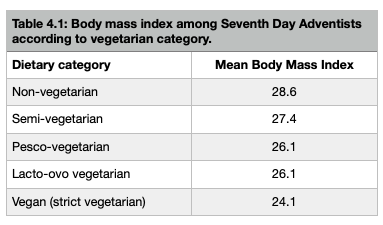
For more on the evidence base for this, see my page Best Fat Loss Diet.
Summary
|
I like the X3 Bar as a substitute for a barbell for squats, deadlifts, and overhead presses. However, Weightlifting Is A Waste of Time contains too many claims that are not substantiated by evidence cited for me to recommend it. Moreover, the training (load/repetition) recommendations and the diet guidelines found in Weightlifting Is a Waste of Time are not well supported by current evidence. |
 |
Notes
1. Petrella JK, Kim JS, Mayhew DL, Cross JM, Bamman MM. Potent myofiber hypertrophy during resistance training in humans is associated with satellite cell-mediated myonuclear addition: a cluster analysis. J Appl Physiol (1985). 2008 Jun;104(6):1736-42. doi: 10.1152/japplphysiol.01215.2007. Epub 2008 Apr 24. PMID: 18436694. <https://journals.physiology.org/doi/full/10.1152/japplphysiol.01215.2007?rfr_dat=cr_pub++0pubmed&url_ver=Z39.88-2003&rfr_id=ori%3Arid%3Acrossref.org>
2. Hunte B, Jaquish J, Huck C (2015) Axial Bone Osteogenic Loading-Type Resistance Therapy Showing BMD and Functional Bone Performance Musculoskeletal Adaptation Over 24 Weeks with Postmenopausal Female Subjects. J Osteopor Phys Act 3: 146. doi:10.4172/2329-9509.1000146
3. Morton RW, Oikawa SY, Wavell CG, et al. Neither load nor systemic hormones determine resistance training-mediated hypertrophy or strength gains in resistance-trained young men. J Appl Physiol (1985). 2016;121(1):129–138. doi:10.1152/japplphysiol.00154.2016. <https://www.ncbi.nlm.nih.gov/pmc/articles/PMC4967245/>
4. https://www.hituni.com/exercise/heavier-load-lighter-load-time-under-load/#.X6nsmS9h066
5. Thiago Lasevicius, Carlos Ugrinowitsch, Brad Jon Schoenfeld, Hamilton Roschel, Lucas Duarte Tavares, Eduardo Oliveira De Souza, Gilberto Laurentino & Valmor Tricoli (2018): Effects of different intensities of resistance training with equated volume load on muscle strength and hypertrophy, European Journal of Sport Science, DOI:10.1080/17461391.2018. 1450898.
6. Schoenfeld BJ, Contreras B, Willardson JM, Fontana F, Tiryaki-Sonmez G. Muscle activation during low- versus high-load resistance training in well-trained men. Eur J Appl Physiol. 2014 Dec;114(12):2491-7. doi: 10.1007/s00421-014-2976-9. Epub 2014 Aug 12. PubMed PMID: 25113097.
7. Fatouros IG, Kambas A, Katrabasas I, et al Strength training and detraining effects on muscular strength, anaerobic power, and mobility of inactive older men are intensity dependent. British Journal of Sports Medicine 2005;39:776-780.
8. Peterson MD, Rhea MR, Sen A, Gordon PM. Resistance exercise for muscular strength in older adults: a meta-analysis. Ageing Res Rev. 2010;9(3):226–237. doi:10.1016/j.arr.2010.03.004.
9. Fry, A. (2012). The Role of Resistance Exercise Intensity on Muscle Fibre Adaptations. Sports Medicine, 34(10), 663-679.
10. Ibid.
11. Eriksen CS, Svensson RB, Gylling AT, Couppé C, Magnusson SP, Kjaer M. Load magnitude affects patellar tendon mechanical properties but not collagen or collagen cross-linking after long-term strength training in older adults. BMC Geriatr. 2019;19(1):30. Published 2019 Jan 31. doi:10.1186/s12877-019-1043-0
12. Zehnacker CH, Bemis-Dougherty A. Effect of weighted exercises on bone mineral density in post menopausal women. A systematic review. J Geriatr Phys Ther. 2007;30(2):79-88. doi: 10.1519/00139143-200708000-00007. PMID: 18171491.
13. Hamaguchi K, Kurihara T, Fujimoto M, et al. The effects of low-repetition and light-load power training on bone mineral density in postmenopausal women with sarcopenia: a pilot study. BMC Geriatr. 2017;17(1):102. Published 2017 May 2. doi:10.1186/s12877-017-0490-8.
14. Sundstrup E, Jakobsen MD, Andersen CH, Zebis MK, Mortensen OS, Andersen LL. Muscle activation strategies during strength training with heavy loading vs. repetitions to failure. J Strength Cond Res. 2012 Jul;26(7):1897-903. doi: 10.1519/JSC.0b013e318239c38e. PubMed PMID: 21986694.
15. Fisher, J., Steele, J., & Smith, D. (2016). High- and Low-Load Resistance Training: Interpretation and Practical Application of Current Research Findings. Sports Medicine, 47(3), 393–400. doi:10.1007/s40279-016-0602-1
16. Stuart, C., Steele, J., Gentil, P., Giessing, J., & Fisher, J. P. (2018). Fatigue and perceptual responses of heavier- and lighter-load isolated lumbar extension resistance exercise in males and females. PeerJ, 6, e4523. doi:10.7717/peerj.4523
17. Fisher, J. P., & Steele, J. (2017). Heavier and lighter load resistance training to momentary failure produce similar increases in strength with differing degrees of discomfort. Muscle & Nerve, 56(4), 797–803. doi:10.1002/mus.25537
18. Schoenfeld et al. (2016) Muscular adaptations in low- versus high-load resistance training: A meta-analysis. Europeans Journal of Sport Science 16(1), 1-10.
21.Holt et al. A satiety index of common foods. European J Clin Nutr (1995);49:675-690.
22. Rolls, B.J. (1995). Carbohydrates, fats, and satiety. American Journal of Clinical Nutrition, 61(4), 960S-967S.
23. Cotton JR, Burley VJ, Westrate JA, Blundell JE. Dietary fat and appetite: similarities and differences in the satiating effect of meals supplemented with either fat or carbohydrate. J Human Nutr Diet (1994), 7, 11-24.
24.Calton, J. (2010). Prevalence of micronutrient deficiency in popular diet plans. Journal of the International Society of Sports Nutrition, 7, 24-24.
25. Hall KD, Guo J. Obesity Energetics: Body Weight Regulation and the Effects of Diet Composition. Gastroenterology. 2017;152(7):1718-1727.e3. doi:10.1053/j.gastro.2017.01.052
26. Ge Long, Sadeghirad Behnam, Ball Geoff D C, da CostaBruno R, Hitchcock Christine L, Svendrovski Anton et al. Comparison of dietary macronutrient patterns of 14 popular named dietary programmes for weight and cardiovascular risk factor reduction in adults: systematic review and network meta-analysis of randomised trials BMJ 2020; 369 :m696. <https://www.bmj.com/content/369/bmj.m696>
27. Cioffi I, Evangelista A, Ponzo V, et al. Intermittent versus continuous energy restriction on weight loss and cardiometabolic outcomes: a systematic review and meta-analysis of randomized controlled trials. J Transl Med. 2018;16(1):371. Published 2018 Dec 24. doi:10.1186/s12967-018-1748-4
28. Iraki J, Fitschen P, Espinar S, Helms E. Nutrition Recommendations for Bodybuilders in the Off-Season: A Narrative Review. Sports (Basel). 2019;7(7):154. Published 2019 Jun 26. doi:10.3390/sports7070154 <
29.Helms ER, Aragon AA, Fitschen PJ. Evidence-based recommendations for natural bodybuilding contest preparation: nutrition and supplementation. J Int Soc Sports Nutr. 2014;11:20. Published 2014 May 12. doi:10.1186/1550-2783-11-20
30. Ames BN. Low micronutrient intake may accelerate the degenerative diseases of aging through allocation of scarce micronutrients by triage. Proc Natl Acad Sci USA 2006 November 21; 103(47):17589-17594.
31. van den Tillaar R, Ettema G. The "sticking period" in a maximum bench press. J Sports Sci. 2010 Mar;28(5):529-35. doi: 10.1080/02640411003628022. PMID: 20373201.
32. Tillaar Rv, Saeterbakken AH, Ettema G. Is the occurrence of the sticking region the result of diminishing potentiation in bench press? J Sports Sci. 2012;30(6):591-9. doi: 10.1080/02640414.2012.658844. Epub 2012 Feb 3. PMID: 22304656.
33. Schoenfeld BJ, Grgic J, Ogborn D, Krieger JW. Strength and Hypertrophy Adaptations Between Low- vs. High-Load Resistance Training: A Systematic Review and Meta-analysis. J Strength Cond Res. 2017 Dec;31(12):3508-3523. doi: 10.1519/JSC.0000000000002200. PMID: 28834797. "Gains in 1RM strength were significantly greater in favor of high- vs. low-load training, whereas no significant differences were found for isometric strength between conditions. Changes in measures of muscle hypertrophy were similar between conditions. The findings indicate that maximal strength benefits are obtained from the use of heavy loads while muscle hypertrophy can be equally achieved across a spectrum of loading ranges."
34. Lopes JSS, Machado AF, Micheletti JK, de Almeida AC, Cavina AP, Pastre CM. Effects of training with elastic resistance versus conventional resistance on muscular strength: A systematic review and meta-analysis [published correction appears in SAGE Open Med. 2020 Sep 9;8:2050312120961220]. SAGE Open Med. 2019;7:2050312119831116. Published 2019 Feb 19. doi:10.1177/2050312119831116
Recent Articles
-
High Protein Chocolate Tofu Pudding
Jul 01, 24 12:41 PM
A delicious high protein chocolate tofu pudding. -
Vegan Macrobiotic Diet For Psoriasis
Sep 05, 23 06:36 PM
Vegan macrobiotic diet for psoriasis. My progress healing psoriasis with a vegan macrobiotic diet. -
How Every Disease Develops
Aug 04, 23 06:22 PM
How every disease develops over time, according to macrobiotic medicine. -
Why Do People Quit Being Vegan?
Jun 28, 23 08:04 PM
Why do people quit being vegan? How peer pressure and ego conspire against vegans. -
Powered By Plants
Mar 16, 23 08:01 PM
Powered By Plants is a book in which I have presented a lot of scientific evidence that humans are designed by Nature for a whole foods plant-based diet. -
Carnism Versus Libertarianism
Dec 30, 22 01:55 PM
Carnism Versus Libertarianism is an e-book demonstrating that carnism is in principle incompatible with libertarianism, voluntaryism, and anarchism. -
The Most Dangerous Superstition Book Review
Nov 15, 22 08:46 PM
Review of the book The Most Dangerous Superstition by Larken Rose. -
Plant-Based Diet Is Best For Health Protection: Meta-Review
Oct 17, 22 11:22 AM
A plant-based diet is best for health promotion according to a meta-review of more than 300 reviews published 1950-2013.
